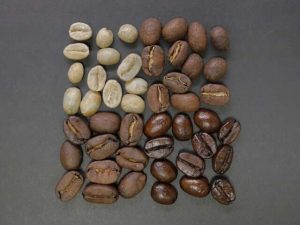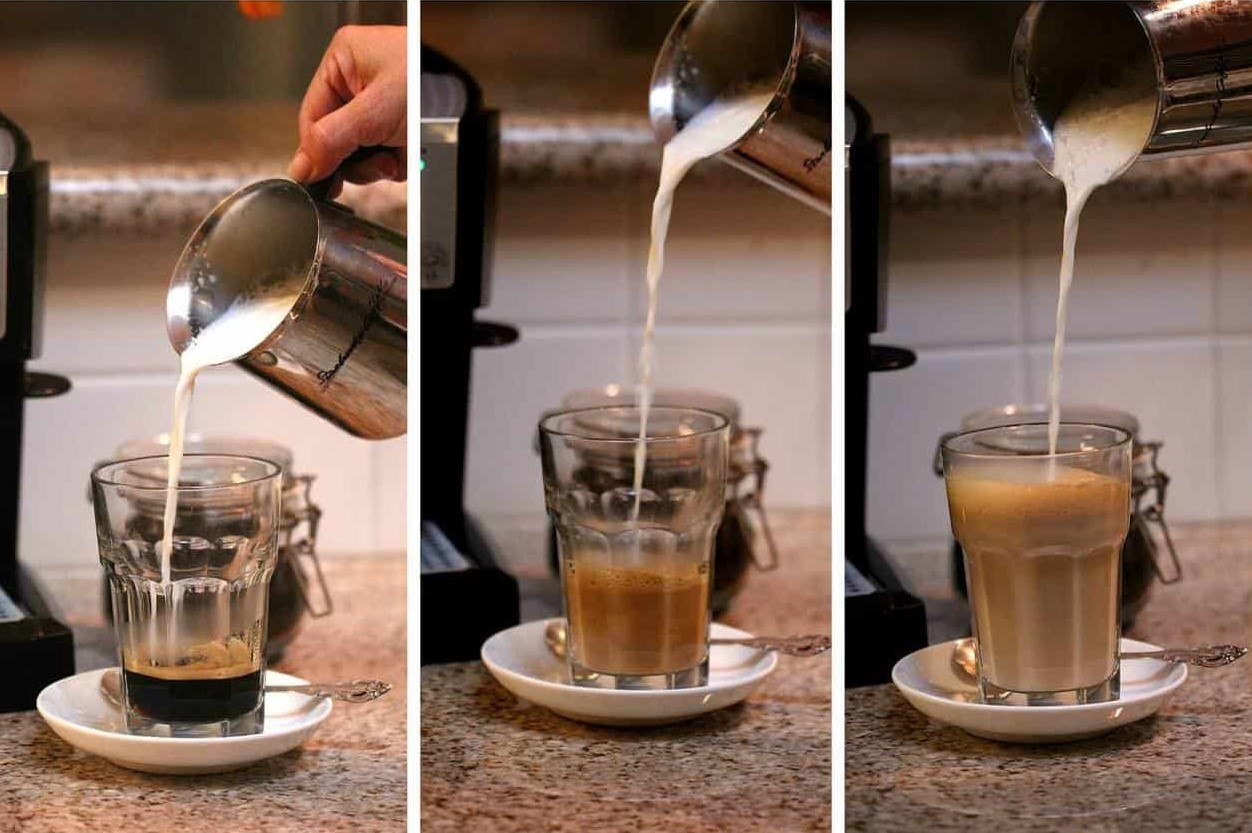In the world of coffee enthusiasts, a spirited debate has raged on for generations – can you brew coffee with milk? It’s a question that has elicited passionate arguments from both sides of the coffee connoisseur spectrum, sparking discussions that range from the scientific to the artistic and from the traditional to the avant-garde.
With its rich history and myriad brewing methods, coffee has long been a subject of fascination and experimentation. Yet, adding milk into the brewing process has stirred controversy like few other topics in the caffeinated world.
On the other hand, some view coffee with milk as a delightful fusion of flavors and textures, a marriage of the robust and the creamy. To them, coffee is a canvas, and milk is the brush that can be used to create a masterpiece of taste and indulgence.
Along the way, we’ll hear from baristas, coffee purists, and experimentalists who have dedicated their lives to perfecting the art of coffee – with or without milk. So, grab your favorite brew, black as night or creamy as a latte, and join us in unraveling the mysteries and controversies of brewing coffee with milk.
Can You Brew Coffee with Milk?

Why Brew Coffee With Milk?
Brewing coffee with milk, though a subject of debate among coffee enthusiasts, has unique motivations and benefits that draw people to this creamy concoction. Here are some reasons why individuals choose to brew coffee with milk:

1. Creamy Texture:
One of the most apparent reasons for adding milk to coffee is its luxurious and creamy texture. Milk adds a smooth and velvety quality to the coffee, which can be particularly appealing to those who find black coffee too harsh or bitter.
2. Balanced Flavor:
Milk can mellow the intense bitterness of some coffee beans. It acts as a natural sweetener, making the coffee taste less sharp and more balanced, which can be especially enjoyable for people with a sweet tooth.
3. Variety of Options:
Brewing coffee with milk opens up a world of flavor possibilities. Different types of milk, such as whole, skim, almond, soy, or oat, can be used to create unique taste profiles. This allows coffee lovers to experiment and find their preferred combination.
4. Nutritional Value:
Milk is a source of important nutrients such as calcium and protein. Combining it with coffee alters the flavor and provides some nutritional benefits. This can be appealing to those looking to boost their nutrient intake.
5. Artistic Expression:
Baristas and home coffee enthusiasts often use milk to create complex and visually stunning designs on the surface of coffee, known as latte art. This adds an artistic dimension to the coffee experience.
6. Cultural Significance:
In some cultures, coffee with milk holds cultural significance. For example, in India, chai, a popular beverage, combines tea with milk and various spices, and it plays an integral role in social gatherings and daily life.
7. Experimentation:
Coffee lovers are often passionate about exploring new flavors and brewing methods. Adding milk to coffee provides an avenue for experimentation, allowing individuals to create unique and personalized coffee experiences.
While brewing coffee with milk may not align with everyone’s coffee philosophy, it undeniably offers a diverse and intriguing world of flavor and texture combinations, making it a compelling choice for many coffee enthusiasts. Whether you prefer your coffee black, with a dash of milk, or as a frothy latte, the choice finally comes down to personal taste and the experience you seek from your daily cup of joe.
Choosing the Right Milk:

Today’s options are vast and diverse when choosing suitable milk for your morning coffee, cereal, or cooking endeavors.
From traditional dairy choices to an ever-expanding array of plant-based alternatives, each type of milk brings its unique flavor, texture, and nutritional profile to the table. This decision isn’t just about personal preference; dietary restrictions, health considerations, and ethical beliefs can also influence it.
In this guide, we’ll explore the different types of milk to consider when selecting the perfect milk for your needs, helping you make an informed choice that suits your taste buds and lifestyle.
- Whole Milk
- Skim Milk
- Almond Milk
- Soy Milk
- Oat Milk
1. Whole Milk
Using whole milk for brewing coffee is a choice that adds a touch of extra creaminess to your daily cup of joe. Whole milk, with its higher fat content, can increase the taste and quality of your coffee in several ways:
Creamy Texture:
When mixed with coffee, whole milk’s fat content provides a velvety and luxurious texture. It creates a satisfyingly smooth mouthfeel that many coffee enthusiasts find appealing.
Balanced Flavor:
The fat in whole milk can help balance the bitterness of some coffee beans, resulting in a more harmonious and well-rounded flavor profile. This makes it an excellent choice for those who want a less intense coffee experience and more approachable.
Richness:
Whole milk imparts a rich and full-bodied taste to your coffee. It can make your coffee feel more indulgent and satisfying, particularly when looking for a comforting and flavorful cup.
Latte and Cappuccino Base:
Whole milk is preferred for creating specialty coffee drinks like lattes and cappuccinos. Its fat content allows it to froth well, creating a dense and creamy foam perfect for latte art and adding an extra layer of indulgence to your coffee creations.
Dessert Coffee:
Whole milk can be an excellent for dessert-style coffee preparations. It pairs wonderfully with flavored syrups, chocolate, and spices, making it ideal for creating coffee drinks with a dessert-like quality.
However, it’s essential to remember that whole milk has higher saturated fat and calories than lower-fat milk options. If you’re mindful of your calorie or fat intake, you may want to consider this when using whole milk in your coffee. Alternatively, you can use it sparingly or in moderation to achieve the desired level of richness without excessive calories.
Ultimately, the choice of milk for brewing coffee, whether whole milk or an alternative, comes down to your taste preferences and dietary considerations. Whole milk can be a delightful addition to your coffee repertoire, especially when creating a creamy and indulgent coffee experience.
2. Skim milk
Skim milk, or fat-free or non-fat milk, is a dairy product that contains little to no fat. Here’s an overview of skim milk and how it can be used when brewing coffee:
Fat Content:
Skim milk contains less than 0.5% fat by weight, making it one of the lowest-fat milk options available.
Nutritional Profile:
Skim milk is a good for protein, calcium, and essential vitamins, particularly vitamin D. Since it’s fat-free, it has fewer calories and less saturated fat than whole milk.
Taste and Texture:
Skim milk has a thinner consistency and a slightly blandering taste compared to whole milk. It lacks the creaminess and richness that entire milk provides.
Coffee:
Skim milk can be used in coffee to create a lighter and more calorie-conscious coffee experience. It won’t add the creamy mouthfeel or richness that whole milk does, but it can be a suitable choice for those who prefer a leaner coffee or are watching their calorie intake.
Latte and Cappuccino:
While skim milk can be used for lattes and cappuccinos, it may not froth as well as whole milk due to its lower fat content. However, creating a decent foam for these specialty coffee drinks is still possible with proper technique.
Adjusting Coffee Flavor:
Since skim milk has a milder taste, it allows the coffee’s natural flavors to shine through. This can be desirable if you want to appreciate your coffee beans’ nuances fully.
Mixing with Flavored Syrups:
Skim milk can work well in coffee drinks incorporating flavored syrups or additives, as its mild taste won’t overpower the added flavors.
Skim milk is a practical choice for those who want to enjoy coffee with fewer calories and less fat. While it may not offer the same level of richness as whole milk, it can still provide a satisfying and lighter coffee experience. Ultimately, the choice between skim milk and other milk varieties for coffee comes down to your taste preferences and dietary goals.
3. Almond Milk
Almond milk is a general plant-based milk that has gained widespread popularity, particularly among individuals with dietary restrictions or those seeking dairy-free options. Here’s an overview of almond milk and how it can be used when brewing coffee:
Ingredients:
Almond milk is typically made from almonds, water, and sometimes sweeteners and stabilizers. It’s naturally lactose-free and suitable for vegans and individuals with lactose intolerance.
Fat Content:
Almond milk is low in saturated fat. However, depending on the brand and variety, it may contain some healthy almond monounsaturated fats.
Coffee:
Almond milk can be used in coffee to create a dairy-free and nutty-flavored coffee experience. It’s a suitable option for those who are lactose intolerant, have dairy allergies, or prefer plant-based alternatives. However, its lighter texture means it won’t provide the same creaminess as whole milk.
Latte and Cappuccino:
Almond milk can be frothed to some extent, making it suitable for lattes and cappuccinos. While it may not produce as dense a foam as dairy milk, it can still create a satisfying and dairy-free froth.
Sweetened or Unsweetened:
Almond milk is accessible in sweetened and unsweetened varieties. Unsweetened almond milk is often used in coffee to allow for greater control over the coffee’s sweetness.
Flavor Varieties:
Some brands offer flavored almond milk, such as vanilla or chocolate almond milk, which can add a unique twist to your coffee. These sweetened varieties may not be ideal if you prefer a more neutral taste.
Almond milk is a versatile choice for coffee lovers looking for a dairy-free or vegan alternative. Its subtle nutty flavor and lower calorie content make it a popular option for those seeking a lighter coffee experience. Whether you use it in your daily coffee or as part of a specialty coffee drink, almond milk can provide a refreshing and allergen-friendly twist to your brew.
4. Soy Milk
Soy milk is a plant-based alternative from whole soybeans, or soy protein isolate mixed with water. It has become a popular choice for those seeking dairy-free and vegan options. Here’s an overview of soy milk and its use in brewing coffee:
Ingredients:
Soy milk is made from soybeans, water, and sometimes sweeteners and additives for flavor and consistency.
Nutritional Profile:
Soy milk is rich in protein, making it the best source of protein for vegetarians. It is typically encouraged with vitamins and minerals like calcium and vitamin D, making it nutritionally comparable to dairy milk.
Taste and Texture:
Soy milk has a neutral and slightly creamy taste with a hint of nuttiness. Its texture resembles dairy milk, making it versatile for various culinary uses.
Coffee:
Soy milk is a popular choice for coffee drinkers looking for a dairy-free and lactose-free milk option. It can be used in various coffee styles, including black coffee, lattes, and cappuccinos.
Latte and Cappuccino:
Soy milk froths well and can create a creamy foam, making it an excellent choice for specialty coffee drinks like lattes and cappuccinos. The foam can be dense enough for latte art.
Flavor Varieties:
Like almond milk, some brands offer flavored soy milk varieties, such as vanilla or chocolate. These options can add a delightful twist to your coffee if you enjoy flavored beverages.
Adjusting Coffee Flavor:
Soy milk has a mild flavor that doesn’t overpower the taste of your coffee, allowing you to appreciate the coffee’s natural flavors.
Nutrition:
Soy milk is identified for its high protein content, making it a nutritious option. It’s also suitable for those who want to reduce their saturated fat and cholesterol intake.
Soy milk’s versatility, creamy texture, and protein content make it a popular and well-rounded choice for coffee enthusiasts. Whether you’re looking for a dairy-free alternative for your daily coffee or want to create specialty coffee drinks with a frothy, dairy-free foam, soy milk can provide a satisfying and plant-based coffee experience.
5. Oat Milk
Oat milk is a plant-based alternative to whole oats, water, and sometimes additional ingredients like sweeteners or stabilizers. It has gained remarkable popularity recently for its creamy touch and neutral flavor, making it a versatile choice for various culinary uses, including coffee. Here’s an overview of oat milk and its use in brewing coffee:
Ingredients:
Oat milk is primarily made from oats, water, and a few additional ingredients for flavor and consistency. It is naturally lactose-free and suitable for vegans.
Texture:
Oat milk is known for its creamy and velvety texture, making it one of the creamier plant-based milk options. This characteristic texture adds a pleasant mouthfeel to coffee.
Taste:
Oat milk has a mild, slightly sugary flavor derived from the oats. This mild taste allows the natural flavors of the coffee to shine through.
Nutritional Profile:
Oat milk is often covered with vitamins and minerals, including calcium and vitamin D, to match the nutritional content of dairy milk. It is also a good source of dietary fiber.
Coffee:
Oat milk has become famous for coffee drinkers looking for a dairy-free and vegan option. It pairs well with coffee, enhancing its creaminess without significantly altering its flavor.
Latte and Cappuccino:
Oat milk froths exceptionally well, creating a creamy, dense foam suitable for lattes and cappuccinos. Baristas and coffee shops often use oat milk for its impressive foaming capabilities.
Allergen Considerations:
Oat milk is a nut-free and soy-free option, which can benefit individuals with allergies to nuts or soy.
Flavor Varieties:
Some brands offer flavored oat milk varieties, such as vanilla or chocolate, which can add a delightful twist to your coffee if you enjoy flavored beverages.
Oat milk’s creamy texture, mild flavor, and excellent foaming capabilities have made it a favorite among coffee enthusiasts and baristas. Whether you’re looking for a dairy-free option for your daily coffee or want to create coffee shop-worthy lattes and cappuccinos at home, oat milk is a versatile and satisfying choice that complements your coffee experience.
Choosing Coffee Beans:

Selecting the right coffee beans is crucial in crafting a coffee experience that suits your taste preferences. Coffee beans can vary significantly in flavor, aroma, and roast level, so you must consider your choices and brewing methods when choosing them. Here are some factors to keep in mind when selecting coffee beans:
1. Origin:
Coffee beans are grown in several regions worldwide, each with a unique taste. Some popular coffee-producing countries include Ethiopia, Colombia, Brazil, Kenya, and Guatemala. Try beans from different origins to discover the flavors that appeal to you.
2. Roast Level:
Coffee beans are typically categorized into three primary roast levels: light, medium, and dark. Light roasts have brighter, more acidic flavors, while dark roasts are often richer and more robust. Choose a roast level that aligns with your taste preferences.
3. Flavor Notes:
Coffee beans can have an inclusive range of flavor notes, such as fruity, nutty, chocolatey, floral, or spicy. Reading the flavor descriptions on the coffee packaging can help you find beans with profiles you enjoy.
4. Freshness:
Freshness is crucial for a great cup of coffee. Look for beans with a roast date, and try to use them within a few weeks of that date for the best flavor. Whole bean coffee retains its freshness longer than pre-ground coffee.
5. Single-Origin vs. Blends:
Single-origin coffees come from a specific region or farm, showcasing the unique characteristics of that location. Coffee blends combine beans from different origins to achieve a balanced flavor—experiment with both to see which you prefer.
6. Brewing Method:
Consider the brewing method you plan to use: a coffee maker, French Press, or pour-over. Some beans may be better suited to specific brewing methods, so ask for recommendations at your local coffee shop or roastery.
7. Grind Size:
Different brewing methods require specific grind sizes. For instance, espresso needs a fine grind, while French Press requires a coarse grind. If you have a grinder, you can buy whole beans and grind them to the appropriate size for your brewing method.
8. Ethical Considerations:
Some coffee drinkers prioritize ethically sourced beans. Look for certifications like Fair Trade or Rainforest Alliance, which ensure fair wages and sustainable farming practices.
9. Budget:
Coffee prices can vary widely. Specialty coffee beans may be more expensive than mass-market brands. Determine your budget and explore options within that range.
10. Sample Small Batches:
If you’re new to coffee or want to explore different options, consider purchasing small bags of beans from other roasters or regions. This allows you to experiment without committing to a large quantity.
11. Local Roasters:
If possible, support local coffee roasters. They often offer freshly roasted beans and can provide valuable advice on selecting beans based on your preferences.
Remember that choosing coffee beans is a personal journey; what matters most is finding beans that you enjoy. Don’t be afraid to try different varieties, origins, and roast levels to discover the flavors that resonate with your palate. It’s all part of the delightful world of coffee exploration.
Brew Types:

There are various methods and brew types when it comes to brewing coffee. Each method uniquely extracts flavors from coffee beans, resulting in different taste profiles and sensory experiences. Here are some of the most popular coffee brew types:
- Cold Brew
- French Press
- Drip Coffee
- Pour-Over
- Espresso
- Moka Pot
1. Cold Brew:
Cold brew coffee is complete by indelicately ground coffee in cold water for an extended period, usually 12-24 hours. It results in a smooth, low-acid coffee concentrate often diluted with water or milk.
2. French Press:
In a French press, coarsely ground coffee is steeped in hot water, and then a metal or mesh plunger is pressed down to separate the grounds from the liquid. This method typically results in a full-bodied coffee with a rich flavor.
3. Drip Coffee:
Drip coffee, often made with an automatic drip coffee maker, is one of the most common and straightforward methods. Crushed coffee is placed in a paper or metal filter in a drip machine, hot water is poured over it, and the brewed coffee drips into a pot or carafe below.
4. Pour-Over:
Warm water is manually poured over coffee grinds in a filter to make “pour-over” coffee. It allows for precise control over factors like water temperature and flow rate, making it popular among coffee enthusiasts. Hario V60 and Chemex are famous pour-over devices.
5. Espresso:
Espresso is a concentrated coffee prepared by adding warm water through finely-ground coffee beans under pressure. It’s the foundation for many other coffee drinks like lattes, cappuccinos, and Americanos.
6. Moka Pot:
The Moka pot, a stovetop espresso maker, brews strong coffee by passing pressurized steam through finely ground coffee. It’s a popular method in Italy that produces a coffee stronger than drip but milder than authentic espresso.
Each coffee brew type offers a distinct experience, so the choice depends on your preferences, equipment, and desired flavors. Exploring different brewing methods can be a delightful journey through the world of coffee and its diverse flavors and aromas.
Step by Step: Brewing French Press Coffee With Milk

Here’s a simplified step-by-step guide to brewing French press coffee with milk:
Ingredients and Equipment:
- Coarsely ground coffee beans (1 ounce or 28 grams for every 16 ounces of water)
- Fresh, cold water
- French Press
- Milk (whole milk, skim milk, or milk alternative)
- Kettle or pot for heating water
Instructions:
- Boil Water: Heat water until just off the boil, around 200°F (93°C).
- Preheat French Press: Pour a little hot water into the French Press, swirl it around, and then discard it to preheat the Press.
- Add Coffee: Put the coarsely ground coffee into the preheated French Press.
- Pour Water: Pour the hot water over the coffee grounds. Use a 1:16 coffee-to-water ratio (1 ounce for every 16 ounces).
- Stir: Gently stir the coffee and water to ensure all the grounds are fully saturated.
- Put on Lid: Place the lid on the French Press with the plunger up to seal the brew chamber.
- Steep: Let the coffee steep for around 4 minutes for a standard brew.
- Plunge: Press the plunger evenly and slowly to separate the grounds from the liquid after steeping. This should take about 20-30 seconds.
- Pour the brewed coffee into your cup, leaving some space at the top for milk.
- Add Milk: While the coffee is hot, add your preferred amount of milk (whole, skim, or milk alternative).
- Stir and Enjoy: Stir the coffee and milk together, let it cool slightly, and then enjoy your creamy French press coffee with milk.
Adjust coffee, water, and milk quantities to suit your taste. This simple method lets you make a satisfying cup of coffee with minimal fuss.
Conclusion:
In conclusion, the debate over whether you can brew coffee with milk is intriguing and multi-faceted. While traditionalists argue for brewing coffee solely with water to preserve the purity of the coffee beans’ flavors, many coffee enthusiasts have embraced the practice of brewing with milk for its unique and delightful qualities.
Yet, it’s crucial to recognize that the choice to brew coffee with milk ultimately hinges on personal taste and the type of experience one seeks from one’s cup of coffee. Traditional black coffee and milk-infused coffee have their devoted following, and there’s room for both in the ever-evolving world of coffee culture.
Whether you stand firmly in the “coffee should be brewed with water” camp, or you’re an advocate for the creamier side of coffee, what truly matters is savoring the experience and enjoying every sip of your favorite brew. The beauty of coffee lies in its versatility and capability to provide a wide range of tastes and preferences, making it a beloved beverage that continues to spark passionate debates and delightful discoveries among coffee lovers worldwide.

